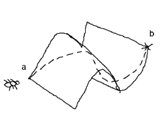|
Design Tooling - Metric-based Design |
|||||||
| |
|||||||
|
|
|||||||
|
Information |
Introduction The notion of a metric for design becomes important as soon as a generative system is based on choice and selection and no human is directly in charge of making the decision as for instance in fitness functions in evolutionary design. Design metrics are often used in optimization of designs for structural or environmental goals. Essentially the choice of what to measure and how to evaluate and weigh can be seen as part of the design approach and not merely as a technical detail and is therefore an important design driver. |
||||||
|
Ecotec developed by Andrew Marsh university of Cardiff- Performance driven design evaluation A software developed by Andrew Marsh that allows the fast and interactive evaluation of building structures in context of light, sound and temperature. Some scripting capabilities. Form generation based on performance criteria window shade generated from the light path of the sun in relation to a window opening in a wall. The device shades the opening for a certain time of day/time of year. |
|||||||
|
(c) Andrew Marsh |
|||||||
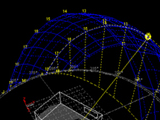 |
 |
||||||
|
sunlightstudy in ecotec |
shadeing louver generated from sunpath |
|
|
|
|||
|
Conditional louvers on Nurbs surfaces An experiment done in Rhino scripting demonstrrates selective placement and orientation of louvers along a double curved NURB surface. This technique allows the generation of a set of louvers along a free form surface taking into account a light direction and shading of all openings from direct sunlight. The approach relies on the principle of using a design surface. To use conditional statements in generative design is a simple way to introduce rules that apply locally or globally to adapt the design moves to a geometric context.
|
|||||||
|
axel kilian 2003 |
|||||||
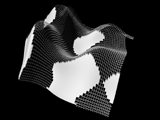 |
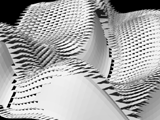 |
||||||
|
louvers applied to a NURBS surface |
- surface pattern |
|
- |
||||
|
Topological optimizer - by Ole Sigmund, Denmark Optimzation of the topology of a structure given a maximum material envelope and a loadcase. TOPOPT is an acronym for TOPology OPTimization.
The TOPOPT-homepage is the homepage for the research group headed
by Ole Sigmund. Currently we are sponsored by the Danish Technical
Research Council (The "Phonon Project") and by the Poul
Due Jensen Foundation. |
|||||||
|
(c) Ole Sigmund |
|||||||
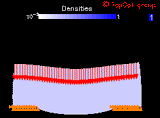 |
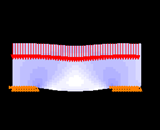 |
 |
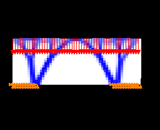 |
||||
|
TOPOPT example images |
TOPOPT working in 3d |
|
|
||||
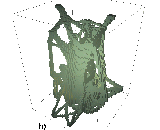 |
|||||||
|
TOPOPT example images |
TOPOPT working in 3d |
|
|
||||
|
Fluid dynamic simulation using Cellular Automata A hexagonal and aquare grid based CA simulates
fluid dynamics through a set of collision rules |
|||||||
|
axel kilian 2003 |
|||||||
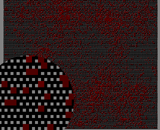 |

|
||||||
|
- Fluid dynamics with cellular automata |
- Rule set for a hexagon grid |
|
|
||||
|
Light Catchers
|
|||||||
|
|
|||||||
 |
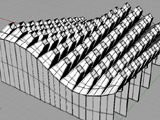 |
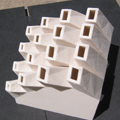  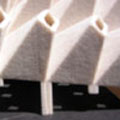 |
|||||
| Yanni Loukissas 2003 |
- 3D Model of Light Catchers |
- 3D Printed Light Catching Surfaces |
|
|
|||
|
Chicken Cooker
|
|||||||
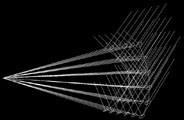 |
|
||||||
|
Stylianos Dritsas + |
"When you watch an ant follow a tortuous
path across a beach, you might say, "How complicated!"
Well, the ant is just trying to go home, and it's got to climb over
little sand dunes and around twigs. Its path is generally pointed
toward its goal, and its maneuvers are simple, local responses to
its environment. To simulate an ant, you don't have to simulate
that wiggly path, just the way it responds to obstacles." |
||||||

